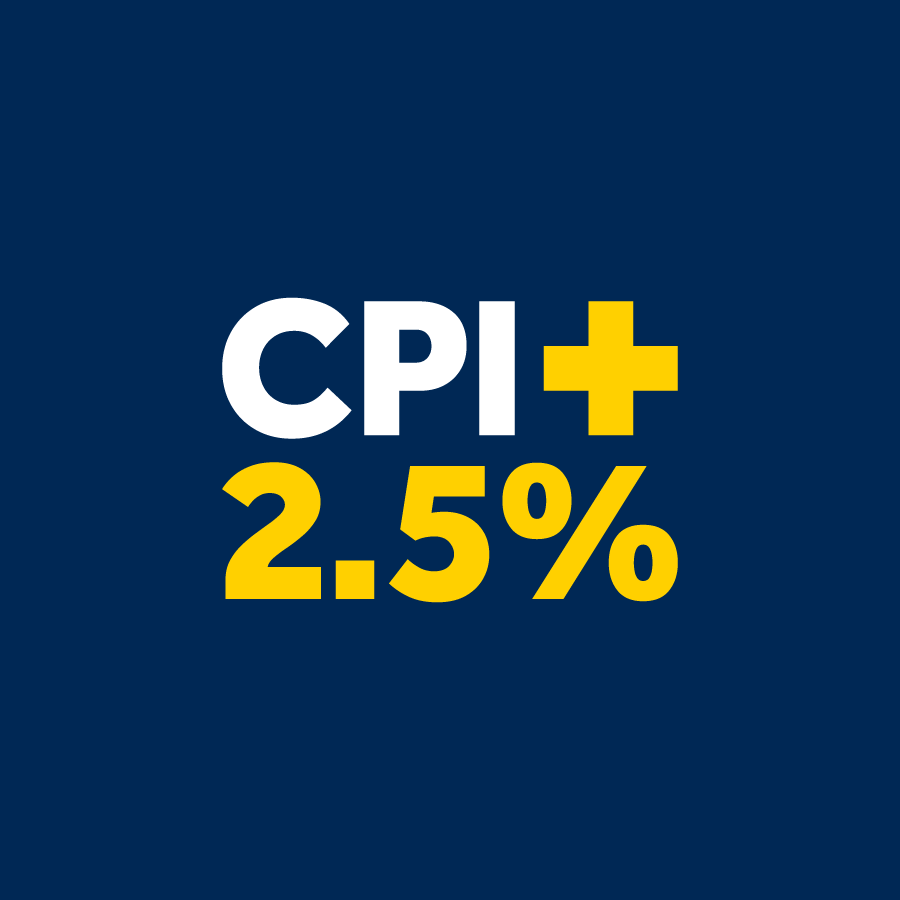Our products and services

We now help members invest in their health.
In partnership with our insurer MetLife, we're pleased to offer 360Health to all Hostplus members and their families.* It's a way to connect to a range of virtual health and wellbeing services at no extra cost.
*The term ‘family/families’ consists of a Hostplus member’s children, partner, parents, and parents in-law.
Learning Hub
Protecting Your Retirement: The Warning Signs of High-Risk Schemes
Following the collapse of the First Shield / Guardian schemes, Hostplus is urging members to familiarise themselves with the red flags to look out for when making decisions about your super. These include cold calling, pressure tactics, and exaggerated promises about high returns.
Manage your super

Hostplus Outstanding Value Super
8 years in a row
We’re proud to have won Canstar’s Outstanding Value Super Award for the eighth year in a row. The award recognises our strong long-term performance, competitive fees and an array of product features.
Retirement

Retirement ready. Tick.
The Epic Retirement Tick is a new recognition from Chant West for super funds that meet a high standard across key retirement criteria.
Hostplus is proud to be among the first of only six funds to earn the Tick - helping members feel confident about their retirement today and into the future.
Forms and resources
Protecting Your Retirement: The Warning Signs of High-Risk Schemes
Following the collapse of the First Shield / Guardian schemes, Hostplus is urging members to familiarise themselves with the red flags to look out for when making decisions about your super. These include cold calling, pressure tactics, and exaggerated promises about high returns.
-
Member Online
Enter your Member Number and Password to access your account anytime.
-
Pension Online
Log in to manage your Pension account 24 hours a day, 7 days a week.
-
QuickSuper
Pay your employees super contributions across multiple super funds.
-
Self-Managed Invest (SMI) for SMSF
Enter your Username and Password to access your account and start managing your investments.
-
Member Join
Everyone is welcome to join us as a member of our personal super plans.
-
Pension Join
Starting a Hostplus Pension or joining Hostplus if you’re not already a member is easy.
-
Employer Join
No fees. Easy payments. Become a registered Hostplus employer in less than 10 minutes.
-
SMI Join
It only takes a few minutes to register to invest with Hostplus Self-Managed Invest.
Why choose Hostplus

Hostplus Outstanding Value Super
8 years in a row
We’re proud to have won Canstar’s Outstanding Value Super Award for the eighth year in a row. The award recognises our strong long-term performance, competitive fees and an array of product features.
Your responsibilities

Hostplus Outstanding Value Super
8 years in a row
We’re proud to have won Canstar’s Outstanding Value Super Award for the eighth year in a row. The award recognises our strong long-term performance, competitive fees and an array of product features.
How to make payments
Tools and resources
News and Insights
-
Member Online
Enter your Member Number and Password to access your account anytime.
-
Pension Online
Log in to manage your Pension account 24 hours a day, 7 days a week.
-
QuickSuper
Pay your employees super contributions across multiple super funds.
-
Self-Managed Invest (SMI) for SMSF
Enter your Username and Password to access your account and start managing your investments.
-
Member Join
Everyone is welcome to join us as a member of our personal super plans.
-
Pension Join
Starting a Hostplus Pension or joining Hostplus if you’re not already a member is easy.
-
Employer Join
No fees. Easy payments. Become a registered Hostplus employer in less than 10 minutes.
-
SMI Join
It only takes a few minutes to register to invest with Hostplus Self-Managed Invest.
Why Hostplus

Retired and looking for more certainty over your returns?
Introducing CPIplus, a Pension investment option that aims to deliver a consistent and predetermined return above inflation each year.
Not available for Transition to Retirement Pensions. Though returns above inflation are predetermined annually, Hostplus can shorten the return period. Hostplus may also adjust the rate of return with at least 30 days’ notice.
Product and fee information for advisers

Retired and looking for more certainty over your returns?
Introducing CPIplus, a Pension investment option that aims to deliver a consistent and predetermined return above inflation each year.
Not available for Transition to Retirement Pensions. Though returns above inflation are predetermined annually, Hostplus can shorten the return period. Hostplus may also adjust the rate of return with at least 30 days’ notice.
News and insights
Investment options
Pricing and performance
News, resources & insights
-
Member Online
Enter your Member Number and Password to access your account anytime.
-
Pension Online
Log in to manage your Pension account 24 hours a day, 7 days a week.
-
QuickSuper
Pay your employees super contributions across multiple super funds.
-
Self-Managed Invest (SMI) for SMSF
Enter your Username and Password to access your account and start managing your investments.
-
Member Join
Everyone is welcome to join us as a member of our personal super plans.
-
Pension Join
Starting a Hostplus Pension or joining Hostplus if you’re not already a member is easy.
-
Employer Join
No fees. Easy payments. Become a registered Hostplus employer in less than 10 minutes.
-
SMI Join
It only takes a few minutes to register to invest with Hostplus Self-Managed Invest.
Our company
Careers
-
Member Online
Enter your Member Number and Password to access your account anytime.
-
Pension Online
Log in to manage your Pension account 24 hours a day, 7 days a week.
-
QuickSuper
Pay your employees super contributions across multiple super funds.
-
Self-Managed Invest (SMI) for SMSF
Enter your Username and Password to access your account and start managing your investments.
-
Member Join
Everyone is welcome to join us as a member of our personal super plans.
-
Pension Join
Starting a Hostplus Pension or joining Hostplus if you’re not already a member is easy.
-
Employer Join
No fees. Easy payments. Become a registered Hostplus employer in less than 10 minutes.
-
SMI Join
It only takes a few minutes to register to invest with Hostplus Self-Managed Invest.
-
Member Online
Enter your Member Number and Password to access your account anytime.
-
Pension Online
Log in to manage your Pension account 24 hours a day, 7 days a week.
-
QuickSuper
Pay your employees super contributions across multiple super funds.
-
Self-Managed Invest (SMI) for SMSF
Enter your Username and Password to access your account and start managing your investments.
-
Member Join
Everyone is welcome to join us as a member of our personal super plans.
-
Pension Join
Starting a Hostplus Pension or joining Hostplus if you’re not already a member is easy.
-
Employer Join
No fees. Easy payments. Become a registered Hostplus employer in less than 10 minutes.
-
SMI Join
It only takes a few minutes to register to invest with Hostplus Self-Managed Invest.
Assumptions
SuperRatings is a ratings, research and consultancy company that specialises in analysing superannuation funds, their investment returns, their fees and the relative benefits they offer to their members. The Accumulation Net Benefit model, prepared by SuperRatings, calculates the variance in earnings and fees between Hostplus and other super funds over different time periods.
Background to the Accumulation Net Benefit model
Sample Set: The sample set used in the modelling contains Hostplus’ Balanced (MySuper) investment option, not-for-profit funds, and the retail super funds which are actively tracked by SuperRatings, including superannuation investment products that are open and those that are closed to new members but continue to hold assets.As at 30 June 2025, the number of super products included in the sample set1 for each comparison period is:
| Timeframe | 1 yr | 3 yr | 5 yr | 7 yr | 10 yr | 15 yr |
|---|---|---|---|---|---|---|
| All super products | 282 | 249 | 235 | 215 | 183 | 82 |
1. Data extract from SMART 2.0 SuperRatings Net Benefit tool, accessed on 24 July 2025.
Information about the Accumulation Net Benefit model
- The model uses the main Balanced option being the fund’s largest Balanced option where 60% to 76% of the fund’s assets are invested in growth investments. This is generally the fund’s default option. This is done for each product provider in the sample set.
- The model uses return and fee data that is submitted by funds to SuperRatings, made publicly available by funds or contained within fund disclosures.
- Using starting annual salary of $50,000 and a $50,000 starting balance, the contributions, earnings and fees are calculated using the data from the most recent completed quarter to derive the closing account balance.
- Comparison periods are based on rolling 1, 3, 5, 7, 10 and 15-year periods to the end of the quarter.
- The net benefit for each product refers to the cumulative earnings less fees and taxes for the relevant comparison period.
- The average net benefit of other balanced options is calculated by taking an average of all net benefit outcomes at the end of the comparison period for the products actively tracked by SuperRatings.
- The net benefit is calculated for each product which has sufficient return and performance history information available over the entire comparison period. Where this information is not available, those products are excluded from the calculation.
- The model assumes no additional voluntary contributions or withdrawals over the relevant comparison period.
- The model will be updated quarterly with investment return figures submitted by funds to SuperRatings following the end of the quarter.
Other assumptions for the Accumulation Net Benefit model
Salary increase
3.5% per annum.
Investment returns
Performance (net benefit) modelling is based on actual reported returns over the stated period.
When are investment returns credited to members’ accounts?
Annually.
Superannuation Guarantee (SG) contribution
The Superannuation Guarantee rate used for each year's calculation is in accordance with the Superannuation Guarantee (Administration) Act. The modelling assumes no salary sacrifice or voluntary contributions.
Contribution tax
15%
When are contributions assumed to be made?
After-tax quarterly SG contributions are applied at the end of each calendar quarter (i.e. March, June, September, December) and are based on actual SG contribution rates of the relevant year.
When are fees assumed to be deducted?
Annually.
Tax rebate
A tax rebate of 15% is assumed on dollar member fees deducted from members’ accumulation accounts in the SuperRatings’ model. Hostplus does not apply the tax rebate.
Fees
All fee information is taken from the sample funds’ product disclosure statements or other formal disclosures at the end of each year in the calculation. Fees deducted from the Fund’s administration reserve, contribution fees, entry fees, additional adviser fees or any other fees charged are excluded from this model.
Insurance
No deductions are made for insurance premiums.
Content reviewed on 3 October 2025
